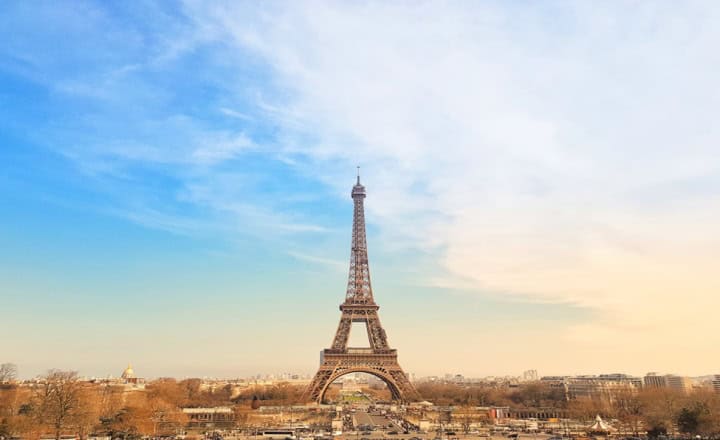Europe stands as a testament to the breadth of human creativity and the depth of our history, a continent where architectural wonders speak volumes of the past, present, and future. From the ancient ruins that dot the Mediterranean landscape to the modernist marvels that silhouette against the northern skies, “Architectural Wonders of Europe: Exploring the Continent’s Heritage” embarks on a journey across this diverse tapestry, uncovering the stories and innovations behind some of the world’s most iconic structures.
The Timeless Elegance of London
Crossing into the United Kingdom, London presents itself as a city where history and modernity are interwoven with remarkable finesse. Among its architectural jewels, the Tower of London and Westminster Abbey stand as symbols of the city’s deep historical roots, dating back to the Norman Conquest and beyond. The Tower of London, a historic castle on the north bank of the River Thames, has served as a royal palace, a prison, and even a zoo, reflecting the multifaceted narrative of England’s past. Westminster Abbey, with its intricate Gothic architecture, has been the coronation church since 1066 and is the final resting place of seventeen monarchs, poets, and scientists, embodying the nation’s reverence for its history and cultural achievements.
Yet, London’s architectural narrative is not solely defined by its past. The Shard, a gleaming spire of glass and steel, pierces the city’s skyline, offering a stark contrast to the historic edifices that dot the city. As the tallest building in the United Kingdom, The Shard symbolizes London’s relentless push towards the future, embracing innovation while maintaining a respectful dialogue with its past. The city’s architectural landscape, from the neoclassical façade of the British Museum to the futuristic Millennium Bridge, tells a story of a metropolis that has continuously evolved, yet remained unmistakably London, a testament to its enduring legacy and dynamic spirit. For those wishing to explore further, the London to Edinburgh train offers a seamless journey to Scotland’s capital, bridging the architectural splendor of London with the equally rich heritage of Edinburgh, and providing travelers with a scenic passage through the UK’s diverse landscapes.
The Eiffel Tower: Paris’s Iron Lady

Journeying northward to Paris, perhaps on the swift and convenient London to Paris train, visitors are greeted by the awe-inspiring sight of the Eiffel Tower, a symbol of industrial age innovation and art nouveau design. Constructed as the entrance arch to the 1889 World’s Fair, Gustave Eiffel’s masterpiece initially faced skepticism from critics. However, it has undeniably become synonymous with the city itself, embodying the spirit of French creativity and resilience. The experience of ascending its iron lattices reveals a panoramic vista of Paris, beautifully interlacing the ancient with the modern into a single, breathtaking tapestry, and showcasing the seamless blend of history and progress that characterizes this iconic city.
The Colosseum: Rome’s Amphitheatrical Ancestor
Our odyssey begins in Rome, with the Colosseum, an enduring icon of ancient architectural brilliance. Built in the 1st century AD, this amphitheater has witnessed the evolution of Roman engineering and society. Its elliptical structure, capable of seating over 50,000 spectators, hosted gladiatorial contests, public spectacles, and historical dramas. Today, it stands as a monument to the complexity and grandeur of ancient Rome, inviting modern visitors to ponder the echoes of history that resonate within its crumbling walls.
Sagrada Familia: Gaudí’s Unfinished Symphony
In the heart of Barcelona, the Sagrada Familia stands as Antoni Gaudí’s magnum opus, a cathedral that transcends traditional architectural boundaries. Begun in 1882 and still under construction, this masterpiece melds Gothic and Art Nouveau styles into a structure that seems to grow from the earth itself. Its spires reach towards the heavens, adorned with intricate sculptures that narrate biblical stories, while its interior forests of columns open into a canopy of stained glass, casting divine light upon the worshippers below.
The Parthenon: Athens’s Crown Jewel
Back across the Mediterranean, the Parthenon on Athens’s Acropolis serves as a symbol of the birth of Western civilization and democratic ideals. This 5th-century BC temple, dedicated to the goddess Athena, combines Doric and Ionic architectural elements in harmony with its natural surroundings. Despite centuries of conflict and decay, the Parthenon’s majestic proportions and enduring beauty continue to inspire awe and wonder, a tribute to the ingenuity of ancient Greek architects.
Neuschwanstein Castle: Germany’s Fairytale Fortress
Nestled in the Bavarian Alps, Neuschwanstein Castle emerges like a vision from a fairytale. Commissioned by Ludwig II of Bavaria in the 19th century, this palace was designed as a romantic homage to the operas of Richard Wagner. With its turrets and towers, Neuschwanstein evokes an idealized version of the Middle Ages, blending historic architectural styles with the king’s fantastical imagination. The castle’s interior, though never fully completed, showcases exquisite craftsmanship and innovation, a dreamlike retreat from the modern world.
St. Basil’s Cathedral: Moscow’s Colorful Confection
In Moscow’s Red Square, St. Basil’s Cathedral dazzles with its kaleidoscopic domes and spirals. Built in the 16th century by order of Ivan the Terrible, its design defies conventional architectural categorization, drawing on Byzantine, European, and Asiatic influences. Each of its nine chapels is uniquely adorned, creating a visual spectacle that captures the diversity and depth of Russian religious and cultural traditions.
Through these architectural wonders, Europe narrates a story of human ambition, creativity, and the quest for meaning across the ages. From the ancient stones of the Parthenon to the futuristic spires of the Sagrada Familia, the continent’s heritage is etched into its cities and landscapes, inviting explorers to wander, wonder, and discover the marvels that bridge time and space.

